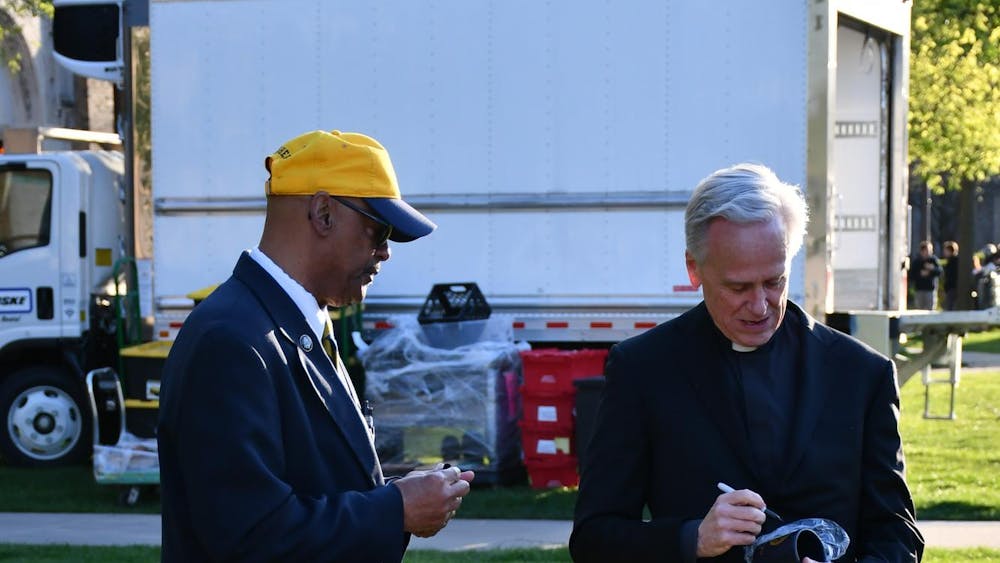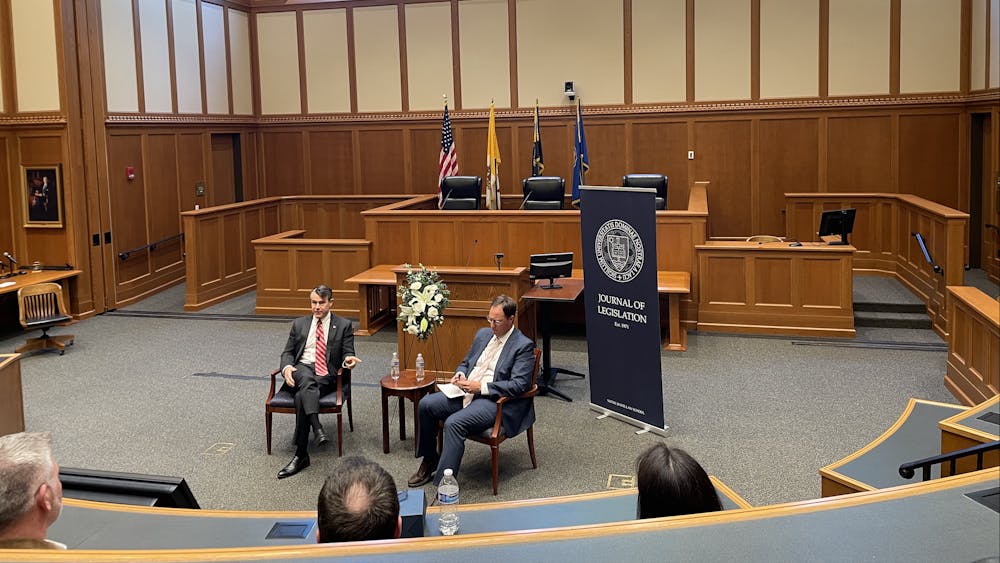After graduating from Notre Dame in May, Patrick Brown began graduate school at the Massachusetts Institute of Technology (MIT). His first semester is already proving interesting: his research laboratory recently played host to President Barack Obama.
Brown, who is enrolled in MIT's graduate physics program, said President Obama's visit to the school was centered on a speech about investment in energy research.

"He was giving a talk at MIT related to energy in general, kind of innovation for America in the energy sciences," he said.
As part of Obama's trip to MIT's campus, he visited a few labs that are involved in energy research on campus, including the lab in which Brown works.
Brown's lab, led by MIT professor Vladimir Bulovic, conducts research with organic structures and quantum dots in order to innovate more efficient production and use of energy.
When Obama visited, only the professor who leads the lab was present to meet him, Brown said.
"None of the students actually got to be in the lab and meet him or anything," he said. "It was kind of exciting, though, just to have that happen in your lab."
President Obama also signed one of the lab's growth chambers for growing solar cells, Brown said.

Brown's interest in quantum solar dot cells began while he was an undergraduate at Notre Dame, where he majored in physics and chemistry. He worked in a lab with Professor Prashant Kamat, where he conducted research with quantum dot solar cells.
"I guess it was just something that I was fortunate to work on with Prashant Kamat so it was something I became interested in," he said.
The focus on research, especially the opportunity to continue his work with quantum dot solar cells, attracted Brown to MIT for graduate school.
"I've been learning how to make different kinds of quantum dots," he said of his research at MIT.
Quantum dot solar cells can be used to make cheaper and more efficient energy than regular solar cells, Brown said. With quantum dot solar cells, it is possible to adjust the wavelengths of light they absorb and to create different types of quantum dots by mixing them together to absorb light across the entire solar spectrum.
"It's definitely a device-focused lab," he said. "They're still kind of new systems … you kind of find out some interesting science along the way while you're trying to make better devices."
Brown said he plans to continue to study and research at MIT until he completes his Ph.D. in physics in five or six more years. He will take classes during the first few years, but will eventually focus more time on research.
After he completes his Ph.D., Brown said he hopes to continue work and research that relates to energy.
"I got really interested in that at Notre Dame working with Professor Kamat and GreeND."
Brown spent the past few summers working at the National Renewable Energy Laboratory, an experience that piqued his interest in working solar power.
"I'm not completely sure where I want to go, but just keep working on using nanotechnology to get more energy efficient devices," Brown said. "Kind of looking at these new ways … to make cheaper solar cells and more efficient solar cells."












